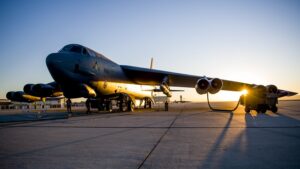
The U.S. Air Force is evaluating a possible unit cost increase for the Lockheed Martin [LMT] AGM-183A Air Launched Rapid Response Weapon (ARRW) and other effects that a House Appropriations Committee-recommended procurement cut to ARRW may mean, if enacted. The service requested $399 million in research and development for ARRW in fiscal 2022, including $161 million to buy the first 12 missiles (Defense Daily, May 18). ARRW is to be the nation’s first hypersonic weapon and is to achieve an “early…














